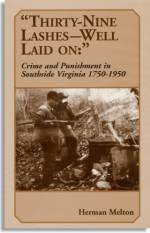
Pittsylvania County Courthouse.
The bronze plaque that has hung on the Pittsylvania County Courthouse since September 17, 1989 reads as follows:
Pittsylvania County Courthouse has been designated a National Historic Landmark. This site possesses national significance in commemorating the history of the United States of America.
Some with roots in Pittsylvania County may not realize what a remarkable designation this was. Only one other courthouse in the Commonwealth of Virginia has such a designation. Hanover County C.H. was given the designation earlier because it was the site of Patrick Henry's first public speech.
The writer hastens to add that that this was not the site of the “Give me liberty or give me death” speech. Instead, it is known as the “penny parsons” speech. Of greater historical significance is the designation for Pittsylvania's courthouse.
The honor was bestowed by the U.S. Constitutional Bicentennial Commission, chaired by retired Chief Justice Warren Burger, in 1987. The Commission chose only five buildings in the U.S. for National Historic Landmark designation. One of them was Pittsylvania's Courthouse. This enhances its historic importance since the five buildings were chosen because they were the sites of events important to the development of the U.S. Constitution.
What happened in Chatham that gave the County Courthouse its coveted historic distinction? The answers are simple but require considerable study if one is to understand the significance.
First of all, the commission noted that the architectural integrity and appearance of the edifice has been assiduously, carefully and remarkably well preserved since the building's erection in 1853.
Secondly, a little known episode transpired there on March 13, 1879 that evolved into an event of profound historical significance — the arrest of the County Judge whose office was in the courthouse.
The warrant must have felt heavy in the hand of Deputy U.S. Marshall James C. Luck as he ascended the courthouse steps to arrest his lifelong friend Judge Doddridge Coles. Luck was born and reared near old Peytonsburg, while the judge grew up at the Coles family plantation at “Elkhorn” near Java. Both were Confederate veterans and, ironically, both were in Pickett's Charge at Gettysburg.
The arrest was authorized in a bench warrant issued by Federal District Judge Alexander Rives of the Western District of Virginia in Danville. Coles was by no means the only county judge arrested. During March of that year, Judge Rives also issued bench warrants for the arrest of 13 other judges in the counties of Amherst, Appomattox, Bedford, Botetourt, Buckingham, Campbell, Charlotte, Franklin, Fluvana, Henry, Nelson, Patrick and Roanoke.
They were all charged with violation of the “equal protection” clause of the Fourteenth Amendment and the Civil Rights Act of 1875 for excluding the names of the black men from jury lists.
Judge Coles' arrest was of greater Constitutional significance since he was the only judge to take his case to the U.S. Supreme Court in Ex Parte Virginia (100 U.S. Otto, 339, 1880). In this landmark decision, the Court upheld the action of Judge Rives. Although Doddridge Coles lost his case by the Court's decision, when he came to trial a year later, his case was nol prossed.
Although some of the judges were tried, none were convicted, but it is assumed that all were soon in compliance with the civil rights statutes. Judge Rives had made his point, but stated during the proceedings that he was not seeking punitive action but compliance with existing laws.
Lest one jump to the conclusion that Judge Rives was a “Carpetbagger,” it should be noted that he was a Virginia blueblood who was reared at palatial Oak Ridge in Nelson County, educated at Hampden-Sydney and was a graduate of the U. Va Law School.
The complete background and sequence of events are narrated in the manuscript of: Equal Protection: The Life and Times of Judge Alexander Rives, which will hopefully be published in soft cover by the writer in the Fall of 1994. Publishing plans will appear in future issues of The Packet.
Meanwhile, those with ties to Pittsylvania County can take a measure of pride in the knowledge that this courthouse was designated a National Historic Landmark by the National Park Service because of a remarkable event that occurred there 115 years ago.

Pittsylvania's Eighteenth-Century Grist Mills

Pittsylvania's Nineteenth-Century Grist Mills

Thirty-Nine Lashes, Well Laid On

Pittsylvania County's Historic Courthouse

Clement: History of Pittsylvania County

Fitzgerald: Pittsylvania: Homes and People of the Past

Hurt: Eighteenth Century Landmarks of Pittsylvania County

Hurt: An Intimate History of the American Revolution in Pittsylvania County

Dodson: Footprints from the Old Survey Books

Byrd: Histories of the Dividing Line Betwixt Virginia and North Carolina

Jones: Tales About People in a Small Town
Herman Melton's online articles are posted by Mitchells Publications and the Sims-Mitchell House as part of an effort to document Pittsylvania County, Chatham, and Danville, Virginia.
Copyright © 1994–2005 Herman E. Melton.